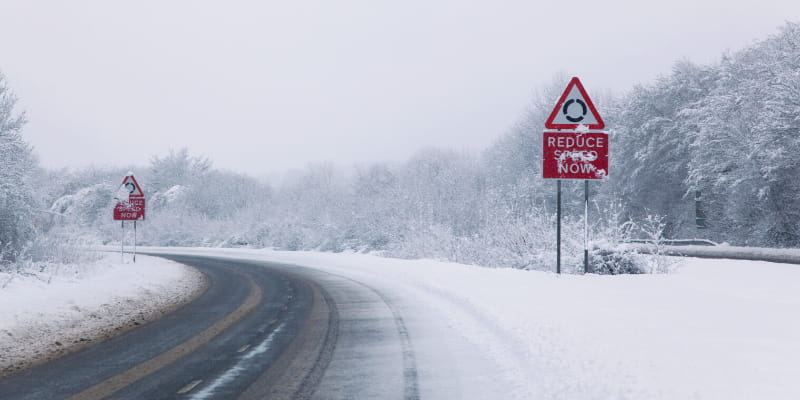Every winter, we hear newscasters begin their traffic reports with a statement along the lines of, “Bad weather caused a major pile-up on the highway today….” The reality, however, is that the weather didn't cause the incident–people did. When bad weather hits, we need to adjust our driving for the conditions. Usually, what causes these mishaps are drivers who did not anticipate and adjust properly.
Winter driving for truck drivers
- Pace: Slow down when conditions affect visibility or vehicle traction.
- Position: Space is an essential element in safe driving. It becomes even more critical when bad weather hits. Increase your following distance to have an “out” when another driver makes a mistake.
- Plan ahead: Slowing down to a speed more suitable for the conditions means your journey will take a little longer. Leave a little earlier, or let others know your arrival will be a little later than usual.
- Patience: Poor weather often leads to traffic jams and delays. Keep your cool! Don’t let frustration take over and change how you drive.
Use the “4 P’s” to keep you and your passengers safe on the road this holiday season and into the new year!
Tips for driving in cold weather
- Keep cold-weather gear with you: extra food and water, medications, flashlight, and cold-weather clothing like a jacket and blankets.
- Maintain proper tire pressure and tread: Both tire pressure and tread have large implications on how your vehicle will perform in the cold, especially when there is the possibility of rain, sleet, snow, and ice being on the road.
- Keep half a tank of gas in your tank just in case: This is one of the biggest winter driving tips for commercial drivers, especially semi-trucks and long-haul truckers. When traveling long distances, the frequency of gas stations reduces (depending on the area). Running out of gas in cold weather is dangerous, particularly in rural areas. By making sure you have gas in the tank, you can preventatively avoid being stranded in the cold.
- Avoid cruise control: Cold weather means the possibility of ice and snow on the road. Cruise control hinders your ability as a commercial driver to decelerate quickly if you were to hit a slippery part of the road.
Tips for driving when ice could be present
- Always have chains: You can use them when driving on ice or when the road gets slippery.
- Reduce your speed in general: Going slower means less impact if you were to get into a skid.
- Accelerate and brake slowly: This reduces the risk of your tires losing traction when accelerating or braking too fast. Traction is your friend, especially when driving on ice. Accelerating and braking slowly will maximize traction, not to mention it helps save gas too!
- Increase your following distance: Make sure you have enough time to stop if you were to hit an ice patch. You can do this by increasing your following distance relative to your normal following distance in regular (warm, dry) conditions.
Tips for driving in the snow
- Drive slowly: Driving on snow is unpredictable, especially for semi-truck drivers. Reducing your overall speed, in general, is the first tip for driving in snowy conditions.
- Increase your following distance: Driving in snow means it could take longer to brake if your traction begins slipping. Expanding your following distance increases your chances of being able to stop in the event that traffic suddenly slows or stops.
- Accelerate and brake with caution: Sudden acceleration and braking harshly can cause your tires to lose traction, which is dangerous when driving in the snow. Braking slowly and accelerating slowly decreases your chances of losing traction.
- Check the weather and plan ahead: If you can, try to plan your trips/deliveries/routes around inclement weather to ensure the safety of not only yourself but your fleet and others on the road.
